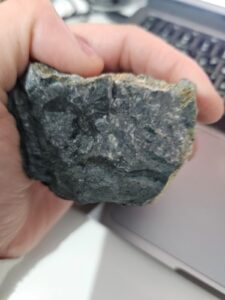As the pandemic slammed the economy, the Federal Reserve slashed US interest rates to historic lows to keep the economy afloat, and gold moved in the opposite direction of the interest rate and the dollar. The precious metal rose more than 35% in 2020 despite the coronavirus wreaking havoc with the global economy. Enthusiasm for the precious metal was driven by investors who viewed it as a much ‘safer bet’ than relying on the central banks to curb the economic damage of the coronavirus.
But according to the World Gold Council, the trade body representing miners, Gold Exchange Traded Products (ETPs) have seen significant withdrawals this year with outflows reaching USD6.1-billion by the end of July, in contrast to last year when inflows reached USD48.7-billion.
There was a shift away from gold as a safe haven and towards metals such as platinum, silver and cobalt that are positioned to benefit from decarbonisation, renewables and electrification of vehicles and trading firms, Traxys, Pelagic Resources and Glencore have been swift to act.
Traxys joins forces with Wheaton Precious Metals
Trading firm Traxys beat more than ten commodity traders in a tender to sell cobalt metal on behalf of Wheaton Precious Metals WPM.TO in a deal that propels it into the big league to rival the likes of Glencore in the valuable commodity.
Two years ago, Toronto-listed Wheaton agreed on a deal that would give it access to substantial volumes of metal from January 2021 at a significant discount to the market price.
Cobalt metal is used in corrosion-resistant alloys that keep their strength at high temperatures. They are typically used to make jet engines, gas turbines and speciality steels. Cobalt hydroxide, which is produced separately, is commonly used for electric-vehicle batteries. Traxys will trade between 50-100 tons of cobalt metal per month for Wheaton until 2023. At today’s cobalt prices this is estimated to be worth around $2.5million per month.
This deal puts Traxys on a par with Glencore on the metal side and consolidates their position. Last November, Traxys agreed to market large amounts of Norilsk Nickel’s cobalt metal production for up to three years. The Russian company produces about 5,000 tonnes of cobalt metal a year as a by-product of nickel.
Glencore leans into cobalt
London-listed commodity trader Glencore produced 46,300 tonnes of cobalt last year, of which 4,100 tonnes was metal. Most of Glencore’s cobalt output is in the form of hydroxide from central Africa.
Glencore has also announced that it has entered a long-term strategic partnership for the supply of responsibly sourced cobalt with Britishvolt, the UK’s foremost investor in lithium-ion battery cell technologies and associated R&D.
The partnership represents a major milestone for Britishvolt on its quest to assist vehicle OEMs on their roadmap to electrification. By securing one of the key battery ingredients from the Glencore cobalt brands, Britishvolt is significantly de-risking its operation by obtaining long-term security of supply across its business.
Pelagic Resources moves to secure platinum
In March 2021 Pelagic’s acquisition of 23% of Bauba Resources (Bauba) (JSE: BAU) secured an evergreen offtake agreement to market all of Bauba’s current and future metallurgical and chemical chrome ore production. Pelagic has since provided Bauba with a financing facility to develop its Kookfontein chrome/PGM project.
The acquisition and development of the Kookfontein project represents an exciting opportunity and a turning point for Pelagic as it anticipates boosting the company into the platinum group metals distribution business.
With investment to decarbonise societies, the supercycle is expected to continue
China’s trend towards stricter pollution control and prevention is unlikely to falter. Companies, especially those in emissions-intensive industries, should proactively prepare for tightening oversight of emissions. Covid-19 has clearly influenced domestic energy and environmental policies in the near-term. Areas to watch include the possibility of more aggressive non-fossil fuel energy share and carbon emissions targets, a fully operating national carbon market, and possibly peak carbon targets for specific sectors and localities.
China’s carbon neutrality pledge presents a strategic opportunity for companies to steward green growth as a core value proposition element. Given the attention China’s carbon neutrality pledge has received both domestically and internationally, China’s government bureaucracy will foreseeably place high importance on achieving progress-to-plan on emissions reduction. Now is the time for companies to strengthen their sustainability agenda in China and develop or update their business and government relations strategies to emphasise their support for net-zero achievement.
The US rolls out tighter emission standards
China is not the only country to focus on environmental controls. In September, President Biden announced a multi step strategy aimed at rapidly shifting Americans from gasoline-powered cars and trucks toward electric vehicles — a central part of his plan to reduce the pollution that is heating the planet. Gasoline-powered cars and trucks are the largest single source of greenhouse gases produced in the United States, accounting for 28% of the country’s total carbon emissions.
Biden’s actions amount to an attempt to overhaul a major American industry in order to better compete with China, which makes about 70% of the world’s electric vehicle batteries. In an effort that blends environmental, economic and foreign policy, Biden wants to retool and expand the domestic supply chain so that the batteries that are essential to electric vehicles are also made in American factories.
This represents enormous opportunities for commodity market participants and Pelagic Resources is already eyeing the United States as a means of diversifying their client base while capitalizing on the expected growth in commodity demand that the US’s environmental policies call for.
Automotive demand: reducing emissions the key driver
Throughout 2020, the global Covid-19 pandemic, supply interruptions, tightening emissions legislation, a greater commitment to the hydrogen economy, faster than expected recovery in car sales and a continuous increase in investment demand created a perfect storm for platinum and PGMs. From the Covid-19 induced lows in March 2020, the platinum price rose by more than 90%, reaching its 6-1/2-year peak of USD1,260 per ounce by early 2021.
New regulations, such as Euro 6d, China 6 and India’s Bharat VI, to name the most important ones, have all started to have an impact on platinum demand. The Euro 6d legislation, due to come into place by September 2022, implies that cars will need to meet limits on NOx emissions for on-the-road driving tests, rather than in tests in the laboratory. The China 6 standards, which started to be enforced in major cities across China from mid-2019, are even more stringent than the EU or US regulations. PGM catalysts became mandatory on all trucks sold in India from April 2020 following the introduction of the Bharat VI (BSVI) legislation.
South Africa’s PGM sector is the largest contributor to mining in terms of sales. The World Platinum Investment Council expects demand to increase in 2021 on the back of a global economic recovery, particularly in the automotive industry.
Platinum’s discount to gold widened considerably during 2020, In the third quarter of 2020, global Exchange Traded Funds (ETF) holdings experienced significant buying. Between July and September, total ETF holdings rose by nearly half a million ounces to a record 3.8m ounces. Some of this was most likely ‘safe haven’ buying spilling over from gold, but buying was also encouraged by the improving sentiment towards platinum’s demand in gasoline autocatalysts and fuel cells.
Pelagic’s partnership with Bauba, who now owns 74% of the entire issued share capital of exploration company Nuco Chrome, has seen Nuco starting site establishment of the opencast upper group two (UG2) reef and expecting a monthly steady-state production of 30,000 metric tonnes, with build-up starting in October.
In addition, Bauba is in the process of concluding an offtake agreement with a nearby platinum-group metals (PGMs) concentrator, which will allow Bauba to capitalise on current strong PGM prices and are anticipated to generate considerable cash flows. These cash flows may then fund the further expansion of Nuco through the future development of its additional and significant chrome ore resource, a chrome ore spiral wash plant, associated tailings storage facility and potentially a PGMs flotation plant to capture the PGMs in the fine chrome tailings.
Owing to the ore being relatively shallow and easily accessible at Kookfontein platinum/chrome mine, the mine has attractive economics with a very competitive operating margin and low start-up capital requirements, which are anticipated to result in a quick pay-back period.
The Kookfontein mine has a life-of-mine of more than ten years, with the current estimated resource, excluding the UG2, totalling about 10.1-million tonnes. The low strip ratio of the Kookfontein mine will ensure low mining costs and that the chrome ore and PGMs produced are at a low cost and are sustainable from an operational perspective.
Proponents of a new commodity supercycle note that huge investments are urgently required to decarbonise industrial societies if the world is to avoid catastrophic damage from climate change. Assets invested globally in commodity ETP trackers stood at USD 226.5-billion at the end of July. For companies such as Pelagic, Traxys and Glencore that are leading the charge on decarbonisation, significant benefits should be achievable across market access, government relations, customer relations, and employer brand dimensions.






